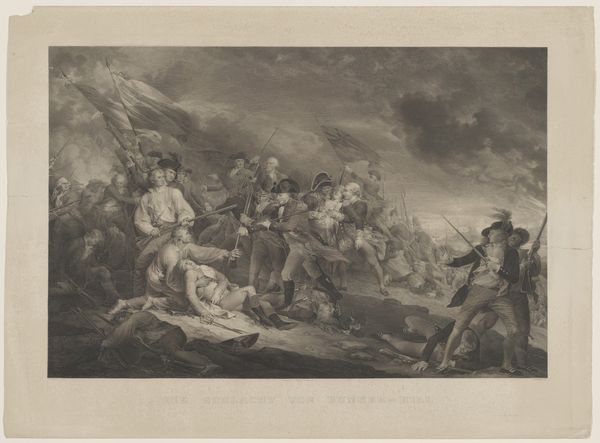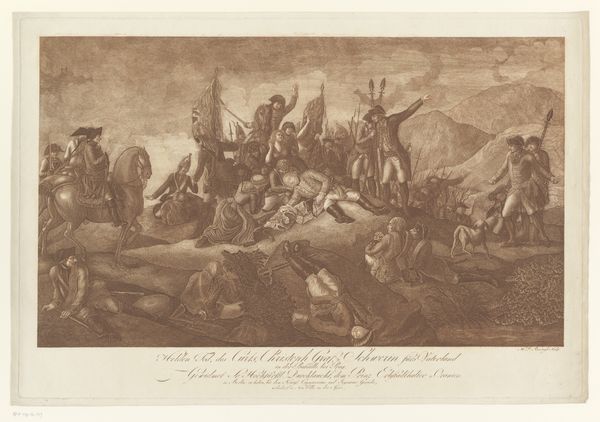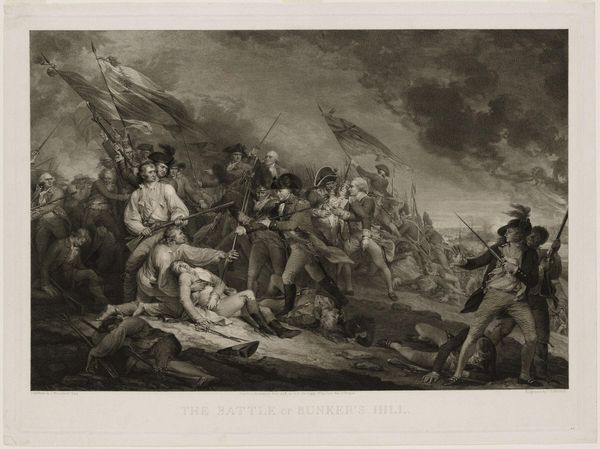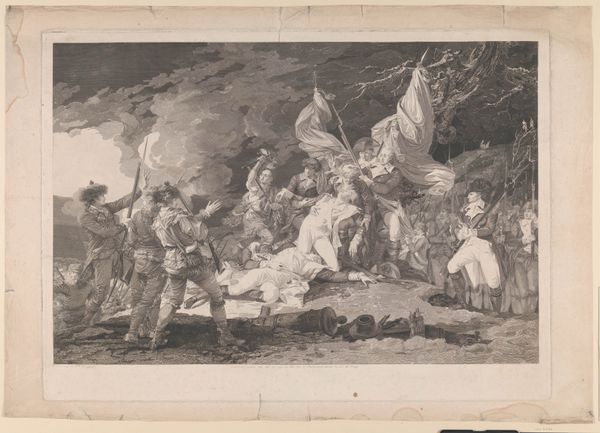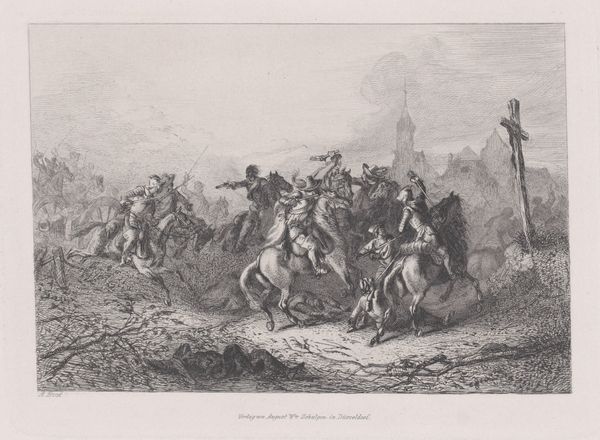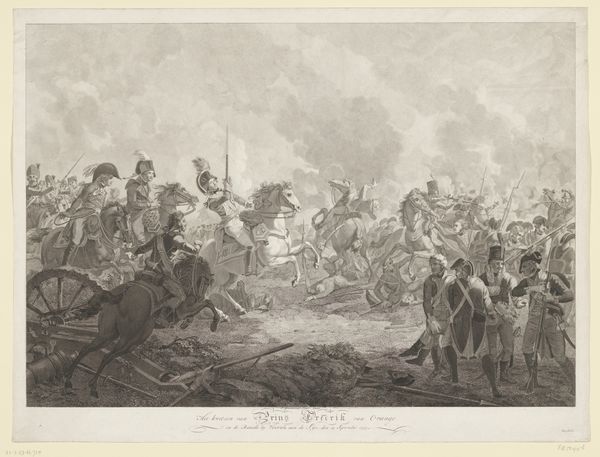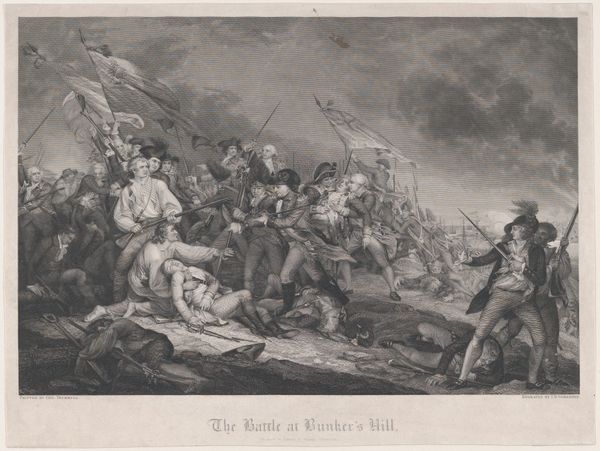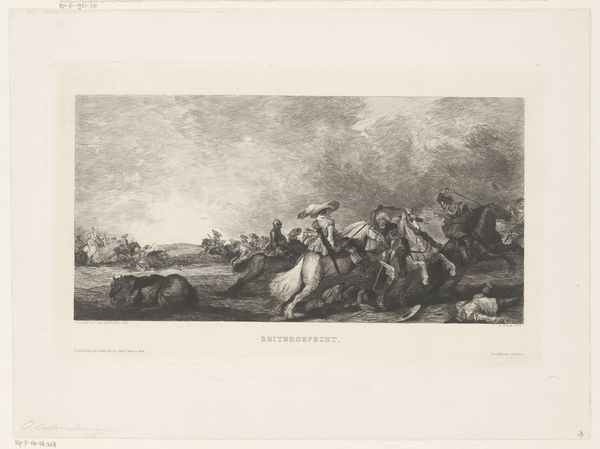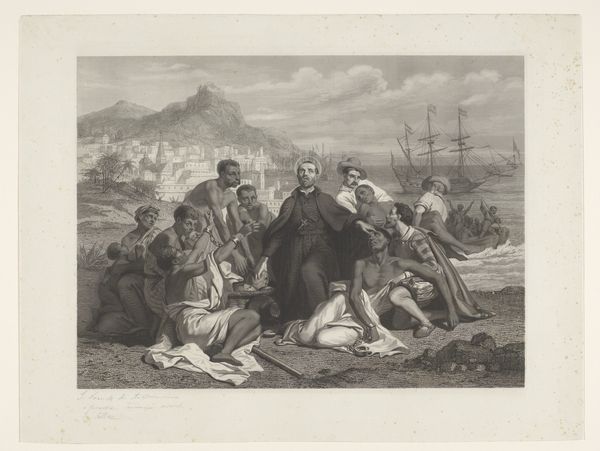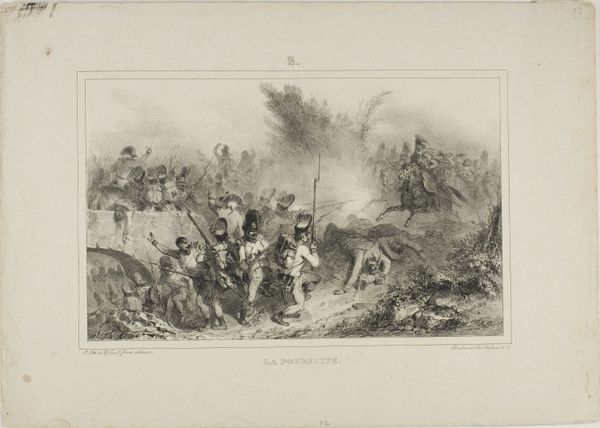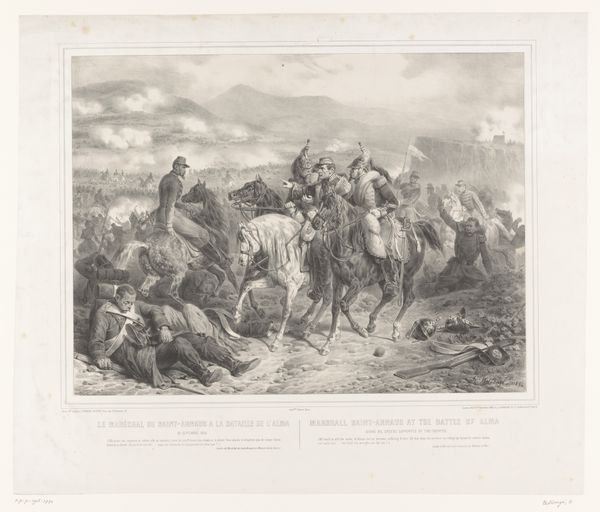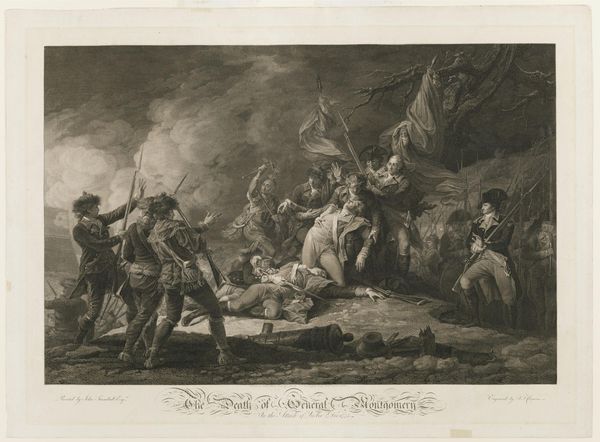
print, engraving
#
narrative-art
# print
#
landscape
#
figuration
#
romanticism
#
line
#
history-painting
#
engraving
Dimensions: height 413 mm, width 512 mm
Copyright: Rijks Museum: Open Domain
Curator: What strikes me immediately is the chaos conveyed through a stark, almost ethereal light. The engraving feels incredibly dynamic despite the limited tonal range. Editor: That's certainly evident. This is Auguste Raffet's "Slag om Bunker Hill, 1775," dating roughly from 1817 to 1840. It is currently held at the Rijksmuseum, and depicts a key moment in the American Revolutionary War. The engraving is an interesting lens through which to view a historical event. Curator: It's fascinating how Raffet uses the graphic nature of the engraving to create a visual hierarchy. The crisp lines accentuate the foreground figures and draw the eye toward the intensity of the conflict. You have these really intense details on the clothing—all rendered with almost scientific precision, right next to more stylized portrayals. Editor: Indeed, it embodies Romanticism’s fascination with conflict and nationalism. Look at how the scene attempts to represent the fervor surrounding the battles for independence. What Raffet chooses to depict, who is centered—these elements reinforce patriotic sentiment. Curator: Notice also the clever use of light to distinguish between the figures. Certain elements seem almost purposefully illuminated—almost theatrical. It pulls us in and stages the drama with very compelling clarity, wouldn’t you say? Editor: That interplay of light and dark—or "chiaroscuro"—undoubtedly heightens the dramatic tension. Yet, beyond the visual spectacle, consider what the image communicates about the glorification of war, the suffering of those involved. It's a perspective, carefully constructed and circulated. This engraving made history accessible and engaging for the 19th-century viewer. Curator: Absolutely. I leave this engraving struck by how, despite the technical constraints of engraving, it achieves a powerful aesthetic unity. The figures and forms all pull together to communicate a larger statement about heroism and, yes, perhaps a subtle romanticism about war itself. Editor: And for me, thinking about how images such as this have, through mass production, affected historical memory, that leaves perhaps the most lingering impression of all.
Comments
No comments
Be the first to comment and join the conversation on the ultimate creative platform.
